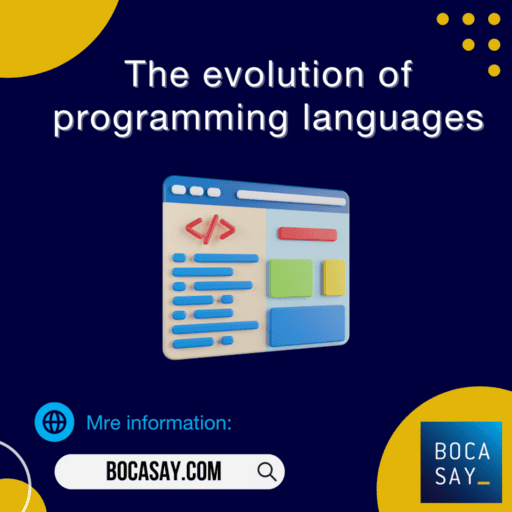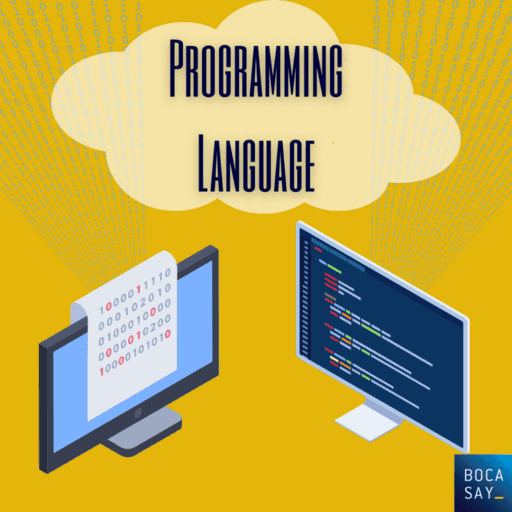Evolutions, trends in programming languages
Any digital device we use in our everyday life, depends on an algorithm developed through a computer programming language. This is simply how computers communicate with each other.
Ever wondered how many computer programming languages are currently in existence? Varying estimates place the total number of programming languages anywhere between 250 and 9000.
Whether coding in a client’s language of choice, or their own, today’s software and web developers benefit from an abundance of available programming languages for any application.

In this article, we will explore the gradual evolution of some of the world’s most important programming languages, as well as discover some of today’s most crucial programming trends.
What is a Programming Language?
You can think of a programming language as a computer language used by programmers – or software developers – in order to communicate with computers and other digital devices. It is essentially a series of instructions, or algorithms, written within a specific language environment like Python or C, with a primary goal of performing a wide range of specific tasks.
Types of Programming Languages
Generally, all computer programming languages, whether brand new or old, can be divided into two main categories:
Low Level Languages
Low level languages are used for writing computer instructions in binary code – that is machine code made up of the numbers 0 and 1. Examples of low level languages include machine language and assembly language. Machine language is the first generation of computer programming – using instructions in binary form that can be directly interpreted by a CPU without a need for translation. Assembly language is the second generation of low level computer programming. This type of language allows programmers to write computer instructions through the use of symbolic code instead of binary code made up of just 0s and 1s.
High Level Languages
High level languages are programming languages that enable software developers to write computer instructions by using commands that are written in human languages like English. Every high level language has its own set of rules and grammar for writing instructions to program any digital device. These unique sets of rules are generally referred to as the ‘syntax’ of a particular programming language. In contrast to low level languages, before running a program written in a high level language, the coding instructions must first be translated into machine code. Every high level programming language uses its own built-in translation program.
The Evolution of Computer Programming Languages
In our digital age where almost anything is instantly possible with a few clicks, it’s easy to forget how far we have traveled on a journey of incredible technological advancement. Let’s have a look at some key evolutionary milestones of computer programming languages:
1843 – Ada Lovelace programs for Charles Babbage’s analytical engine
Considered by some to be the ‘father of the computer’, in 1837, Charles Babbage proposed the analytical engine, a mechanical general-purpose computer. By 1843, Ada Lovelace, the world’s first computer programmer, was the first to recognise that the analytical engine could do much more than just calculations, and she published the first algorithm that was intended to run on it.
1949 – Assembly becomes first widely-used programming language type
As mentioned above, this type of low level programming language is significant because it was the first to enable programmers to write code by using symbols instead of binary code. Even today, the same type of computer programming is used in real-time software like simulation flight navigation systems and medical monitoring equipment, or for creating computer viruses.
1952 – Autocode becomes first compiled computer programming language
First developed by Alick Glennie for the Mark 1 computer, Autocode is a term used for a family of ‘simplified coding systems’ – later renamed to programming languages – which eventually came to include examples like Cobol and Fortran. Even if Fortran is not widely used in industry today, it is still used by NASA and it is still popular with science and engineering applications.
𝔻𝕠 𝕪𝕠𝕦 𝕟𝕖𝕖𝕕 𝕒 𝕡𝕒𝕣𝕥𝕟𝕖𝕣 𝕔𝕒𝕡𝕒𝕓𝕝𝕖 𝕠𝕗 𝕡𝕣𝕠𝕕𝕦𝕔𝕚𝕟𝕘 𝕙𝕚𝕘𝕙 𝕢𝕦𝕒𝕝𝕚𝕥𝕪 𝕀𝕋 𝕕𝕖𝕧𝕖𝕝𝕠𝕡𝕞𝕖𝕟𝕥 𝕗𝕠𝕣 𝕪𝕠𝕦𝕣 𝕔𝕠𝕞𝕡𝕒𝕟𝕪? 𝔸𝕥 𝔹𝕠𝕔𝕒𝕤𝕒𝕪, 𝕠𝕦𝕣 𝕕𝕖𝕕𝕚𝕔𝕒𝕥𝕖𝕕 𝕥𝕖𝕒𝕞𝕤 𝕠𝕗 𝕕𝕖𝕧𝕖𝕝𝕠𝕡𝕖𝕣𝕤 𝕡𝕣𝕠𝕧𝕚𝕕𝕖 𝕔𝕦𝕥𝕥𝕚𝕟𝕘 𝕖𝕕𝕘𝕖 𝕤𝕠𝕗𝕥𝕨𝕒𝕣𝕖 𝕤𝕠𝕝𝕦𝕥𝕚𝕠𝕟𝕤 𝕗𝕠𝕣 𝕔𝕠𝕞𝕡𝕒𝕟𝕚𝕖𝕤 𝕒𝕣𝕠𝕦𝕟𝕕 𝕥𝕙𝕖 𝕨𝕠𝕣𝕝𝕕. 𝔾𝕖𝕥 𝕚𝕟 𝕥𝕠𝕦𝕔𝕙 𝕥𝕠 𝕗𝕚𝕟𝕕 𝕠𝕦𝕥 𝕙𝕠𝕨 𝕨𝕖 𝕔𝕒𝕟 𝕙𝕖𝕝𝕡 𝕨𝕚𝕥𝕙 𝕪𝕠𝕦𝕣 𝕟𝕖𝕩𝕥 𝕡𝕣𝕠𝕛𝕖𝕔𝕥.
1957 – Fortran is designed for numeric computation and scientific computing
Developed by John Backus and IBM, Fortran is considered the first high level language, designed to be relatively easy to learn and widely applicable. Most importantly, Fortran allowed programmers to develop software 500% faster than when writing code in Assembly or machine language. The software that ran NASA’s Voyager 1 and 2 spacecraft was written in Fortran 5.
1959 – Cobol established as Common Business-Oriented Language
Becoming the top-choice for business applications, and owing much of its popularity to IBM, by 1997, 80% of the world’s business was running on Cobol. As recently as 2020, the US internal revenue service scrambled its path to a Cobol-based IMF (individual master file), in order to support citizens and companies as part of the coronavirus pandemic aid and relief package.
1964 – BASIC (Beginners’ All-Purpose Symbolic Instruction Code)
Designed by John G. Kennedy and Thomas E. Kurtz, the BASIC programming language was intended to be as accessible as possible, and it is not surprising that it eventually came to dominate the home computer market that emerged in the 1970’s. By 1991, Microsoft had developed Visual Basic by combining an updated version of BASIC with a visual forms builder.
1972 – C begins to shape the future of the personal computer
C is the mother of almost all high level languages and it is still one of the world’s most popular to this day. It can be used for implementing a computer operating system, an embedded system, as well as in web environments by using the Common Gateway Interface (CGI). C’s offspring programming languages include C#, D, Go, Java, JavaScript, Limbo, Python and others.
Current Trends in Programming Languages

As the digital transformation of our world proceeds faster than ever, and as programming skills continue to be in high demand across a wide range of industries, what are some of today’s most important and widely used computer programming languages?
Python
Close to 50% of software developers use the Python programming language today. This is a high-level, readable language endorsed by Google, Pinterest, Wikipedia, Instagram and others.
JavaScript
JavaScript is a multi-paradigm and dynamic programming language chosen by almost 65% of today’s programmers. It is endorsed by Microsoft, Paypal, Netflix, Uber, Facebook and others.
Java
Java, one of the most demanded and classic programming languages used today, is embraced by companies like Spotify and Amazon for enabling fast software development and cost-efficiency.
PHP
Almost 22% of global professionals use the PHP language for scripting and web development. This is an open-source language characterized by simplicity, cost-efficiency and accessibility.
Typescript
Simplifying Javascript by making it easier to read and debug, as of 2022, TypeScript has been one of the ten most used professional programming languages for several years in a row.